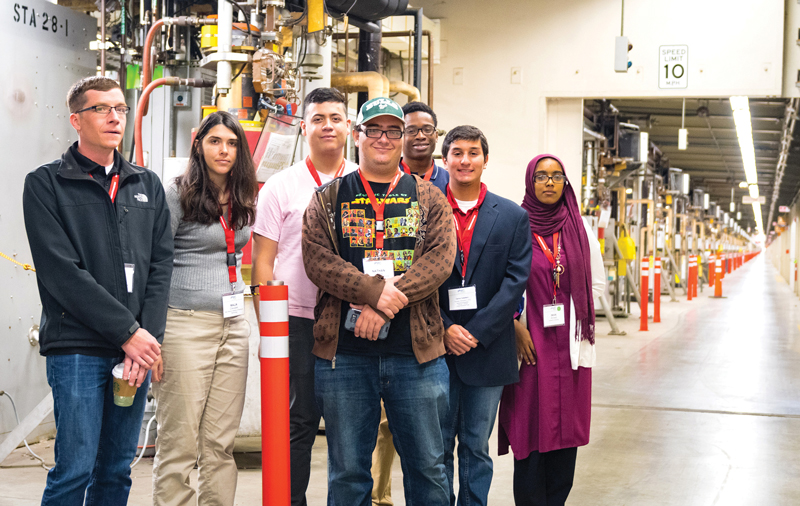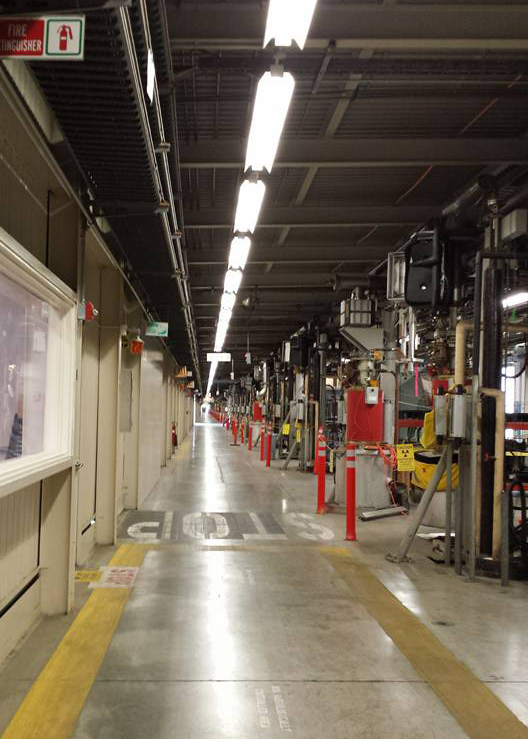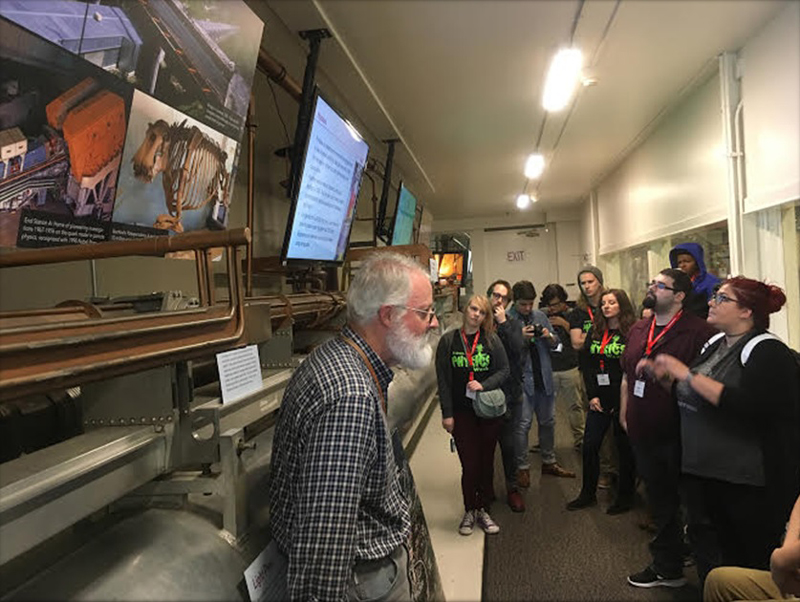SLAC! Touring the Eighth Wonder of the World!
Spring
2017
Special Feature
PhysCon 2016
SLAC! Touring the Eighth Wonder of the World!
Drace Adams, Samantha Tietjen, and Cameron Tolbert, SPS Reporters, Cleveland State University

Originally named the Stanford Linear Accelerator Center (SLAC) and founded in 1962, the SLAC National Accelerator Laboratory continues to be a state-of-the-art particle accelerator. Housing the world’s longest radio frequency (RF) linear accelerator, the main SLAC beam line can accelerate electrons and positrons with up to 50 GeV of energy. Hosting a suite of instruments, including a linear collider, the Linac Coherent Light Source, the Facility for Advanced Accelerator Experimental Tests (FACET), and much more, the facility is a leader in both elementary particle physics and condensed matter research.

Having gone through several upgrades in recent years, SLAC underwent a major restructuring in the 1990s to avoid the fate of other major facilities that had to scale back operations or shut down entirely, such as Fermilab’s Tevatron Collider or the Superconducting Super Collider (SSC or Desertron) in Texas, which never even had the chance to open its doors. The facility redesigned its accelerator to become a free-electron x-ray facility, sending high-speed free electrons through a series of magnets to produce high-energy electron beams for research, once again placing it at the forefront of scientific advancement. It’s no secret that SLAC is a huge facility, especially because its claim to fame is housing the world’s longest linear accelerator that is one of the world’s straightest objects. It’s so big, in fact, that our tour had to be conducted via bus to truly appreciate its size and scope. Home to over a thousand employees, scientists, and graduate students, the SLAC facility conducts many different experiments at once; to do this, the main linear accelerator, which is so long that it runs underneath Highway 280, has several smaller facilities which branch off from it.
After a brief history of SLAC, our first stop was the Stanford Synchrotron Radiation Lightsource (SSRL), a storage ring for a beam of electrons. The SSRL is used for experiments in areas from environmental studies to nanotechnology, but the bulk of the work highlighted during the PhysCon tour focused on polymers and subatomic structures, because of the small wavelength of the high-energy beam. Then we visited the Linac Coherent Light Source (LCLS), a massive, 1-km-long facility in part of SLAC’s original accelerator. The LCLS produces high-energy x-rays from 1 to 10 keV by accelerating electrons through a series of alternating bar magnets to produce an undulating, sinusoidal beam pattern. The acceleration of the electrons causes them to emit x-rays. When we toured, the two ongoing experiments concerned the study of atomic properties and the demagnetization process.

Next, the bus dropped us off at what looked like a backlot: nothing spectacular, very grey, and near a highway. “That’s not just any highway,” the tour guide pointed out. “That’s Highway 280. Welcome to the Klystron Gallery.” The excitement upon getting off the bus was much like what walking into Jurassic Park must have felt like, minus the dinosaurs. The Klystron Gallery is the only above-ground portion of the main accelerator and the most integral part, as it is the accelerator’s main power source. The gallery is an accelerator itself that provides pulses of radio waves to accelerate electrons and then uses a series of copper linear accelerator, or Linac, discs to match the electron speed to the phase speed of the radio waves. It’s easy to understand why the accelerator’s nickname was originally Project M (for Monster). When standing in the center of the gallery and looking either way down the hall, it’s impossible to see the ends. The sheer enormity was simultaneously awe inspiring and humbling, and was an incredible way to end the tour. Standing within the Klystron Gallery was definitely one of those moments that you never forget.
Research in SLAC facilities is also leading to many innovations, such as the ideas of Dr. Kent P. Wootton, a post-doc working with SLAC to reimagine the x-ray accelerator for use in medical physics. His idea is to take the accelerator structure and etch it into silicon chips using photolithography, which could administer radiation therapies to patients internally. Fabrication of such chips is currently being done on the Stanford University campus.
SLAC’s reputation is of a kind that makes the facility seem the stuff of legends, a scientific Shangri-La that couldn’t possibly be real. The tour of SLAC made such a wonder all the more tangible, far more real than it ever seemed to us before.

